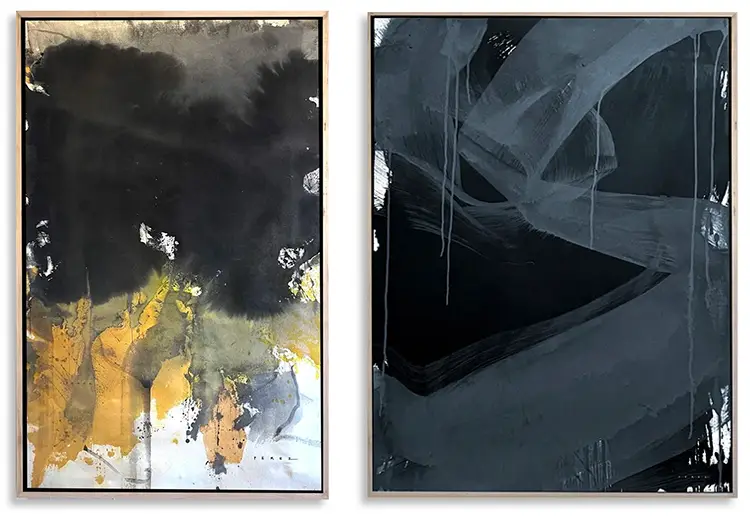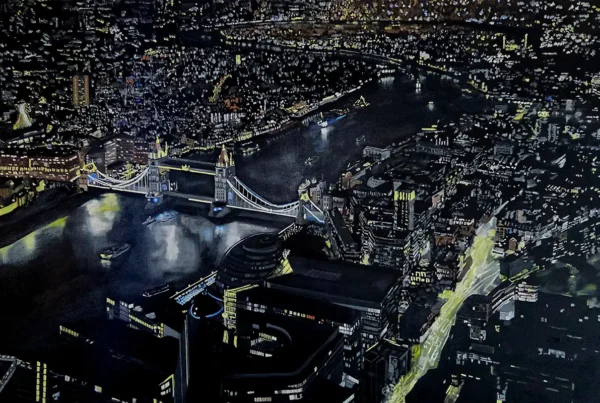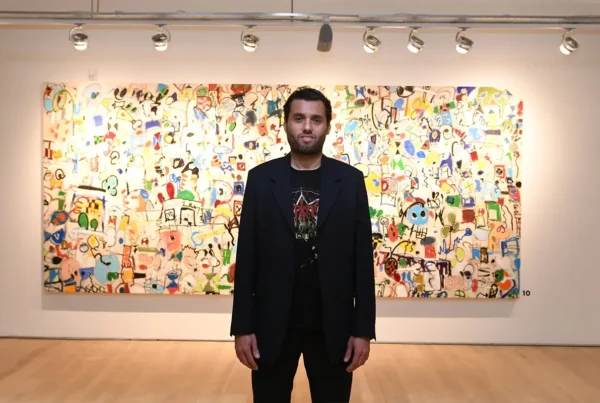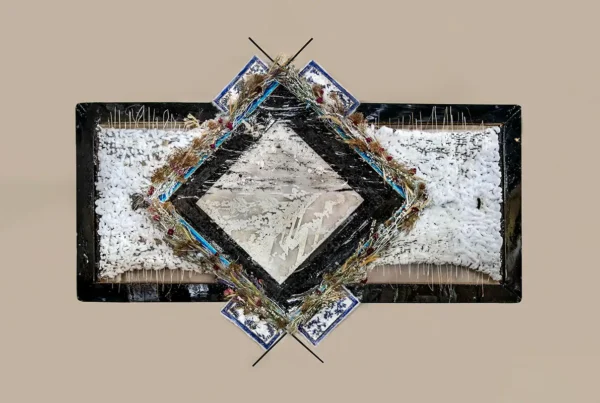Unearthed Histories, Felt Through Form
Monica Perez’s practice is neither bound by medium nor confined by traditional aesthetics. This Uruguayan-born artist navigates the porous boundaries between painting, sculpture, and installation to confront and reconsider the buried residues of colonialism. Working primarily with elemental materials such as wool, wax, soil, and chalk, she engages with their complex cultural, ecological, and political connotations. These substances do not serve as mere tools for expression but assert their own presence. They participate in shaping the work, charged with the weight of their own histories. Each fiber, pigment, or fragment of earth becomes a partner in Perez’s process, challenging viewers to consider not only what is made but also what has been endured.
Perez’s art draws attention to the violence that has been sanitized in historical accounts, particularly the brutal transformation of Uruguay’s landscapes under colonial economies. The country’s entanglement with the British wool trade serves as the focal point of her long-term project, COST, which arose during her time studying at the Royal College of Art in London. There, she began tracing the historical arc linking her birthplace with the former colonial center, revealing how England’s textile wealth depended on the reorganization of faraway territories, including Uruguay. Sheep farming, once seen as benign or pastoral, becomes in her work a symbol of commodification, dispossession, and genocide. The wool itself, which Perez sources in raw, unprocessed form, carries with it lanolin, scent, and residual memory — reminders that commodities are never neutral.
In this way, Perez resists the polished finality of traditional object-making. Her works are not static artifacts but living surfaces marked by rupture, repetition, and tension. Through gestures like staining, binding, and layering, she imbues each piece with the urgency of both resistance and ritual. These repeated motions reflect a deep attentiveness — to history, to material, and to the body in motion. Her pieces ask to be encountered slowly, not solved. They do not offer tidy narratives or comforting resolutions. Instead, they hold open a space for reckoning, drawing viewers into a visceral proximity with the cost of forgetting.

Monica Perez: Material as Witness
The project COST unfolds as a series of inquiries into the intersections of trade, violence, and erasure. Rather than depict these histories directly, Perez materializes them. Her works are named in the manner of archival entries — COST.1831, COST.89%, COST.1:1 — each title pointing to a statistic, date, or location that encodes a deeper trauma. These numerical designations are not sterile. They mirror colonial systems of accounting, while also subverting them. Through this ledger-like structure, she exposes how people, places, and lives were once flattened into quantities for the sake of commerce. Yet, unlike historical ledgers that sought to erase, her titles insist on remembrance. They function as both markers of loss and acts of reclamation.
In COST.1831, the year marks a calculated massacre: Fructuoso Rivera’s betrayal and killing of Charrúa leaders under the guise of diplomacy. That same year, British naval power was securing trade routes across the Atlantic, synchronizing imperial expansion with Indigenous dispossession. Perez does not illustrate these events. Instead, she allows them to echo through the physicality of her works. In one piece, an antique Georgian sack hook pierces a hanging sculpture, a reference to the tools that once moved wool and other goods across oceans. This hook, however, also becomes a symbol of violence — its presence evokes the weight of labor, of flesh, of absence. The sculpture is not a metaphor. It is an embodiment.
Materials such as wool, mudlarked wood, and red wax are carefully chosen for their specific genealogies. British wool carries with it the legacies of land privatization and enclosure. Eucalyptus from Uruguay points to the ecological transformations that enabled large-scale pastoral economies. Bogwood and chalk ground the work in geographies shaped by imperial flows. These substances are not arranged arbitrarily. They each bear their own histories and interact in ways that make Perez’s installations feel alive — sites where colonial pasts are not just referenced but reawakened. The surfaces crack, bulge, and resist containment, refusing to become decorative or easily consumed.
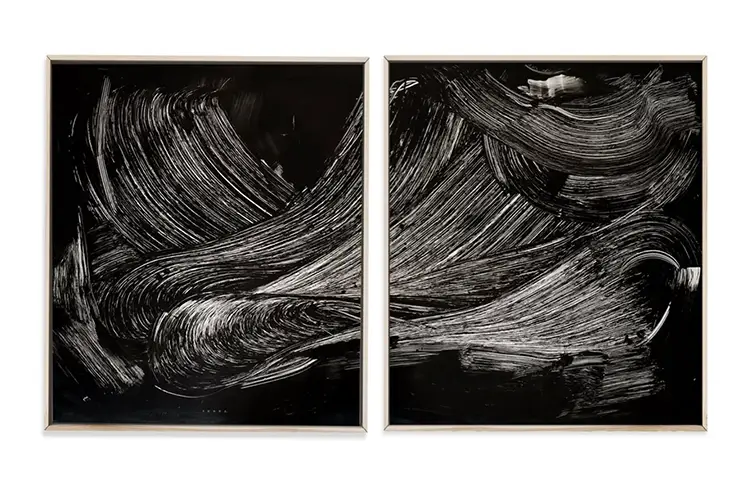
Of Scar Tissue and Surface
The body, though rarely depicted directly in Monica Perez’s practice, haunts every surface. Her artworks often resemble organs, wounds, or remnants of flesh. In COST.1:1, the weight of a sheep is equated with that of a human body, pointing to how colonial economies measured life by utility, not humanity. The work is not an image but a confrontation — a suggestion that imperial trade did not merely displace people but recalibrated value itself. The bodily nature of the materials reinforces this. Wool clings to canvas like skin, wax cracks like dried blood, and surfaces bruise with pigment. Each piece is a scar, both literal and conceptual, that insists on being acknowledged.
This attention to corporeality is grounded in Perez’s understanding of memory as embodied. For her, remembering is not simply an intellectual act. It is physical, sensory, and relational. The sculptures hung from butcher’s hooks, for example, suggest both slaughter and suspension. They hover between life and death, presence and absence. The artist refers to them as relics — fragments extracted not only from materials but from history itself. When she receives bags of raw wool, the visceral response they provoke is part of the work. The smell, the lanolin, the trace of the farm from which it came — all of these evoke emotional and ancestral currents that cannot be contained in language alone.
This connection to the sensorial is further emphasized in her studio practice. Objects from the Thames, pieces of mud-caked wood, and fragments sourced from Uruguay are coated in wax and arranged into a private archive. These artifacts form a constellation of memory, each one indexed to a place and a time that shaped Perez’s diasporic identity. She left Uruguay at eight years old and now moves between London and Los Angeles. This triangulated existence informs her approach to displacement and cultural amnesia. She does not seek a fixed home in her work but a process of stitching together fragments — a method of staying in motion, of constantly reconnecting what history tried to sever.
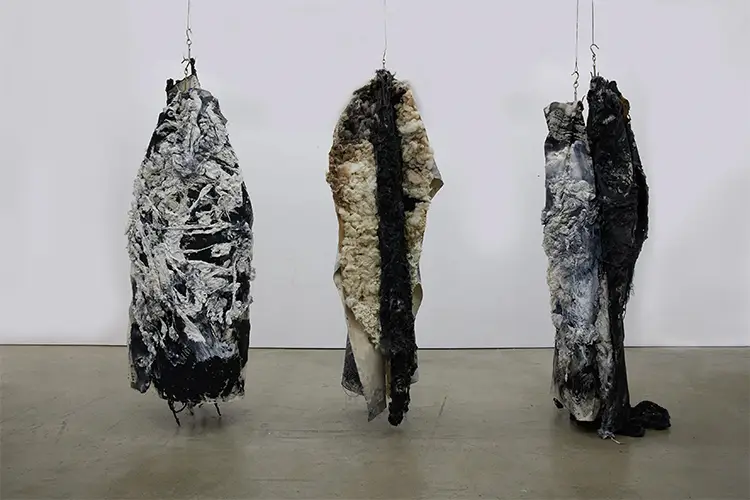
Monica Perez: Refusal as Practice
Perez’s work resists resolution in the same way that history resists repair. The COST series is not a closed project but a continual unfolding, one that draws on theory, memory, and material presence to navigate difficult terrain. Her use of Deleuze and Guattari’s rhizomatic structure is not merely conceptual. It guides the architecture of the project itself. There is no beginning, no hierarchy, no fixed narrative. Instead, each piece connects to others through scars, absences, and repetitions. The series allows entry at multiple points — through a number, a material, a shape — and each pathway leads to another, refusing a singular interpretation. In this way, Perez encourages viewers to dwell within complexity rather than seeking clarity.
The work also draws from Actor-Network Theory, which treats objects not as passive tools but as agents that shape meaning and power. In Perez’s installations, a fiber of wool or a fragment of chalk is not ornamental. It is a participant in the network of colonial memory. In COST.FRACTURE, red wool, bogwood, and wax form a surface that appears to split apart under pressure. The cracked textures suggest not only physical trauma but a refusal to heal over. The artwork does not aim to repair what was broken. Instead, it holds the fracture open, asking what it means to sit with historical violence rather than obscure it.
What emerges across Perez’s practice is a politics of refusal. Her pieces refuse to be decorative, to be easily understood, to be reduced to the data they reference. They refuse the smooth surfaces of institutional history, where violence is often obscured beneath neutrality. Instead, they present roughness, abrasion, instability. In doing so, they invite viewers to participate in an ethical encounter — one that acknowledges what has been lost, what cannot be reclaimed, and what still lingers. Through her commitment to material truth and historical honesty, Monica Perez offers a way of thinking and making that resists forgetting, insisting instead on the transformative power of remembering otherwise.
